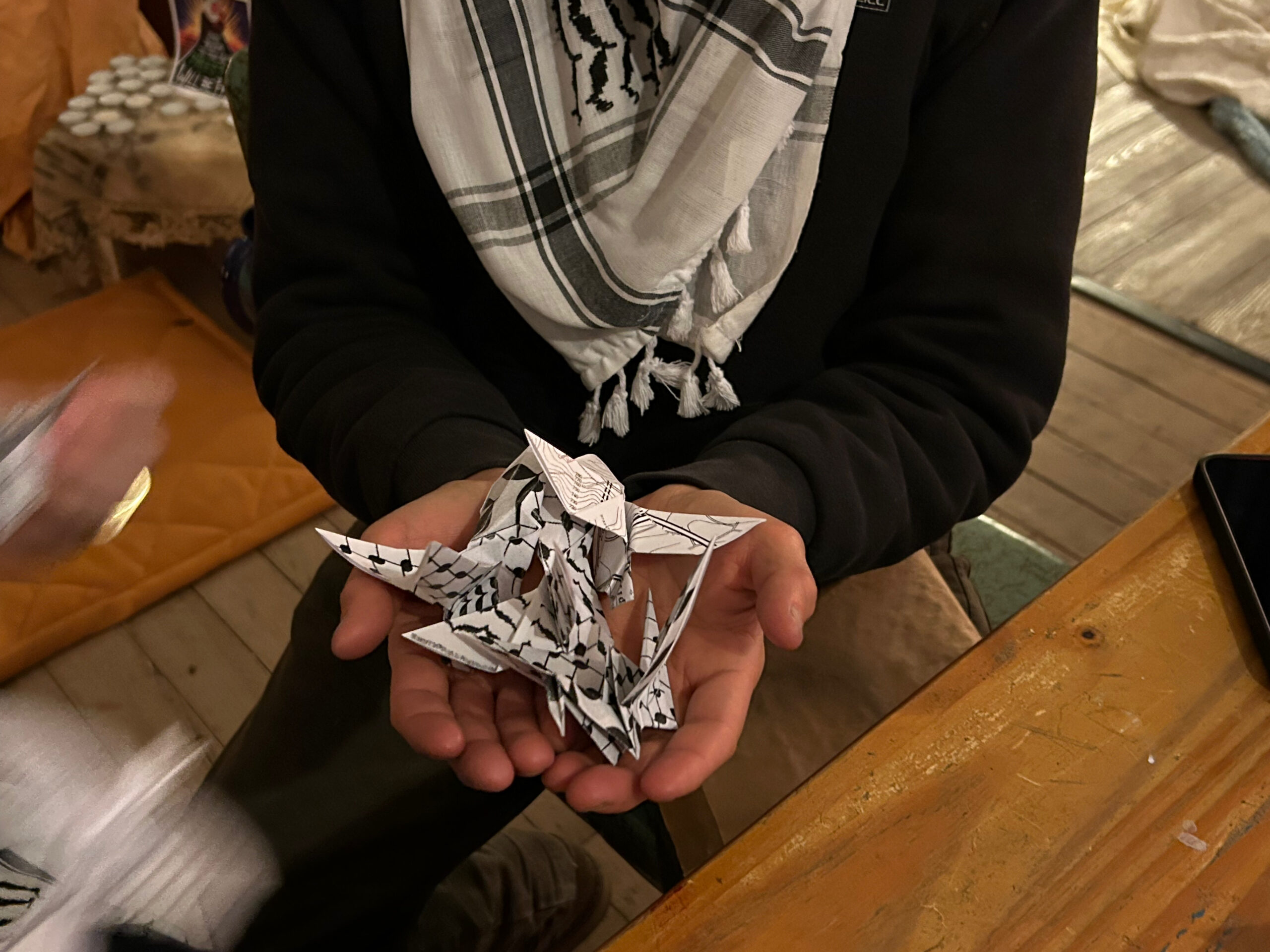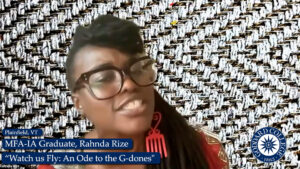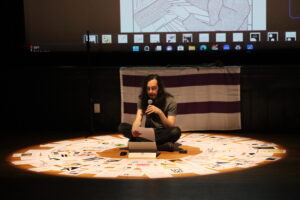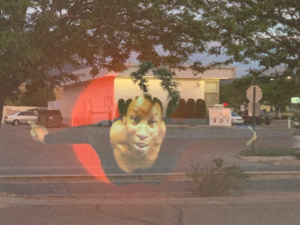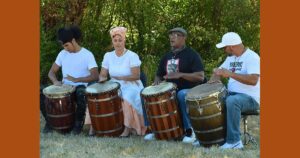April 5, 2019

This is the third installment of a three-part interview with Stefanie Batten Bland that was conducted by Reuben Radding on March 4, 2019 at New York University in New York City. Stefanie and Reuben are both current students in the Master of Fine Arts in Interdisciplinary Arts program at Goddard College. All photographs in the series are by Reuben Radding. Part One of this interview was published on March 13, 2019. Part Two was published on March 29, 2019.— editor
STEFANIE BATTEN BLAND is a Choreographic Artist & Filmmaker.
Jerome Robbins awardee, she physically interrogates contemporary and historical cultural symbolism – and the complexities of human relationships. Her intercontinental dance-theatre Company SBB, formed in 2008 in France situates their work at the intersection of installation and dance-theatre in film and live performance settings. Currently, SBB is Movement Director at The Public Theater and a Choreographer for American Ballet Theatre’s Women Movement Initiative. She lives with her family in New York City.For more info: companysbb.org
REUBEN RADDING is a photographer, writer, and musician based in New York City. His award-winning street and personal documentary photographs depict elusive or unlikely candid moments, and intentionally provoke unanswerable questions in the viewer’s mind. Radding’s work has been exhibited in galleries around the world, and in publications like The New York Times, Rolling Stone, Hamburger Eyes, Time Out, Hyperallergic, Downbeat and others. His work has also been featured at the Miami Street Photography Festival, The Center for Fine Art Photography, and the Focus on the Story Festival. His first book of photographs, Apparitions, was published in 2013. Radding has been an instructor with the New York Institute of Photography since 2013, and has taught workshops or lectured at New York University, The School of Creative and Performing Arts, Marble Hill Camera Club, and others. Since 2017 he has offered a series of street photography workshops from his Brooklyn studio. He graduates from Goddard College with an MFA in Interdisciplinary Arts in July 2019.
RR: It’s interesting when I try to relate my experience of that workshop to the perennial myth of gesture coming from self-expression, or from emotion…because in dance, especially telling stories in dance, the performer doesn’t actually need to have the emotion they’re portraying. They’re not necessarily expressing their emotion, they’re using symbology, right? So, like, if you’re The Swan, you don’t have to actually be feeling what The Swan feels in their despair, you’re doing gesture that communicates that despair. And then what you’re doing in work like yours––it’s no less symbology but it seems like maybe a lot of the discovery of the gestures, the discovery of how to tell the story comes through giving people permission to use their impulses––which may come from emotion or it may not.
SBB: Sure! Sure, sure. I mean, I would say, even for ballet and what a large story ballet is, they’ve got such a huge script going on in their heads. Those things are so written out. But, yeah, I mean I’m from this…I’m such a wild conglomerate of so many different types of dance and theater-making, that really the theater side in me is equal with the dance side of me, and so this is an exercise that––you can think of it from a method place if you need to, you absolutely can––or you can look at it purely in an abstract way, like a post-modernist way that’s just “I’m doing this to try this out, and what comes out of it can maybe relate to something, and I can paste it onto something else.” It gives you whatever you want. Honestly, it’s one of those kind of exercises that you can get anything out of it. And generally, in my pieces once I understand what the piece is about, of what each scene is about, how we get from the beginning to the end of that scene can be not a very a/b route. It can go all over the place as long as we’re pushing the story forward. And it’s true that I do like to play with this accidental kind of, “oh, these moves happened to correspond with that meaning. Great. What a great accident!” [laughs] You know, I enjoy that. I love to know, “how would you dance with that lamp?” You know, and like turn the lamp into the best partner ever. Cause in the end, I guess, gesturally…it’s not going to be the gesture that tells the audience member why it’s so important. It’s going to be my sight. It’s going to be my focus. That brings it all the way back to just being people and how we see each other––how we let our eyes flitter amongst the subway––it’s such a vulnerable place, how we see things. To me, that’s the magical part of my pieces. Honestly, physically, we could be doing whatever, [laughs] but normally it’s: how you see us seeing it, or seeing the other person seeing that tells you what’s going on, probably who we should be looking at, even. Though I do make those kinds of pieces where it’s all about the form, and gorgeous moves, amazing moves––those are the jobs that pay the most most of the time––[laughs] and of course I’ll sneak my signature stuff in there too, but my favorite things is when I watch everybody understand who to watch because they see who the performers are looking at, and they’re like, now they’ve got it. Now we’re all turning the page at the exact same time.

RR: Isn’t it interesting? I notice this when I’m photographing. If someone notices that I’m there with a camera the first thing they do is–they don’t really spend time looking at me, they look at what I’m looking at. So, if they see me, and I’ve got a camera, but my eyes are looking over here…
SBB: They’ll follow! Right, that’s right!
RR: They’ll turn and look at that. They don’t watch what I’m doing. Very quickly after they’ve noticed me they want to see what I’m looking at. So, I’ve often used that to my advantage.
SBB: I’m sure.
RR: And it wasn’t something that I thought much about [before being a street photographer], I just went with it, and later in reflecting on it realized like, oh, you don’t really have to worry too much most of the time, cause they’re going to look where they think I’m looking, where it appears I’m looking.
SBB: Yeah, cause they’re rendering “something in this direction is made important due to this lens.” And people want to know what that is.
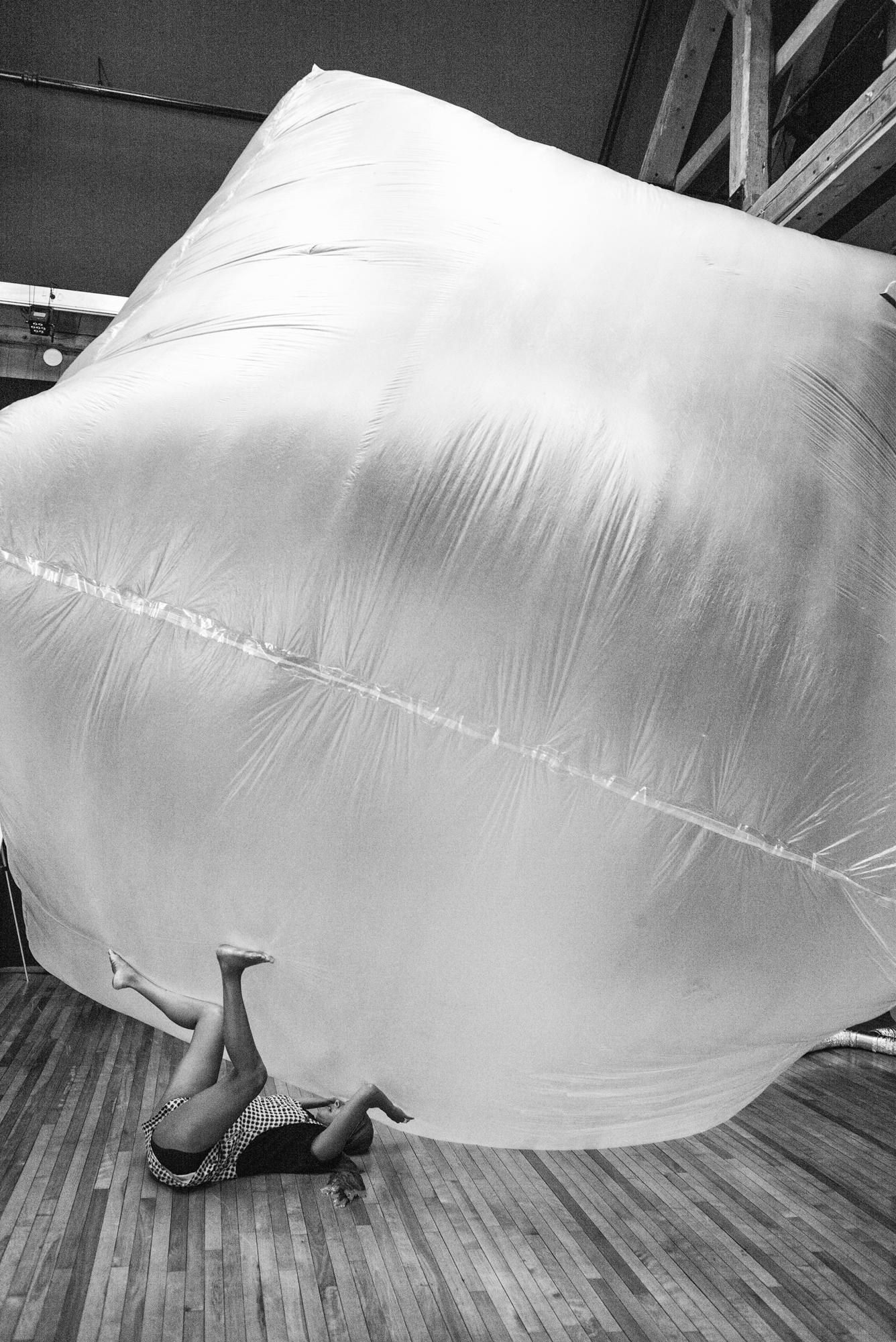
RR: Yeah, and they can’t tell from the camera. So it’s interesting that you think about the way attention is directed as well. It’s not just through the performative, like, “here’s the most interesting thing over here,” it’s also about the attention of the others you have at your disposal. When I think about the rehearsals of your company that I’ve been at there’s a great deal of…like if somebody is sort of featured a little bit, somebody’s got their moment, very often if other players are animate––if they’re not just hiding under something––they’re witnessing that person, and it probably adds to our attention on them.
SBB: Yeah, you just hit another word that we use so much: witnessing. Cause it’s [the] testimony, and hearing of other people that I feel like we get to do as our job that’s so amazing, that I love about it. It’s something we need in life. We need someone to be able to hear us. God, I keep going back to value, right? But, it puts in value what you just experienced by being able to share it with someone, by knowing that someone is actually hearing you say it, right? So, theatrically that’s the same thing, thanks to sight, especially if there’s no text involved. It’s this act of being the witness. Being able to witness, sharing that commonality that…we all know what that’s like, to listen to someone tell you a story or tell you how their day went , or tell you what they’re going through, right? And we’ll do it for one another as well within the piece.
RR: How would you articulate the difference between “witness” and “spectator?”
SBB: I feel like a witness understands that there’s something they’re there to capture or see…it feels omnidirectional to me. It feels kind of sacred, in a way. And very delicate. And could just be an accident. I feel a spectator has a weight in it, a very clear role.
RR: Interesting, cause what was rolling around in my head as I was watching you grapple with that was the feeling in me that the witness’s presence is important, and the spectator’s is completely incidental. Like, speaking to my past as a musician, I spent a lot of nights playing to an empty room or to where there’s two people there, and the spectators? Like, we could do it without you! I can go inside myself and play and…
SBB: That’s right!
RR: …have a deep experience, but to be witnessed, is a lot more meaningful because you need that witness. The witness is somebody who can testify.
SBB: Yeah yeah yeah yeah! Right right right! They don’t call a spectator to the stand. Yeah, that’s so wonderful.
RR: A spectator might be buying a beer during the best part of the game, but a witness is genuinely involved.
SBB: Yeah, there’s a clarity in the role. We use the word witness a lot while we’re working, and then when I turn towards speaking about audiences I always interchange it with spectator, but I rarely interchange that with the word witness, and I think it’s definitely cause I want to make sure that I understand that there are two very crucial financial transactions going on here, and I want to be able to somehow merge them into something that’s valuable for both parties, but it feels contractual. It’s allowing me to speak in an us and them manner, it has a lot of clarity in it, and witnessing isn’t clear at all. It’s a very magical place to be able to witness something. Wouldn’t that be a great title, “Witness the Spectator?” Something like that, you know?
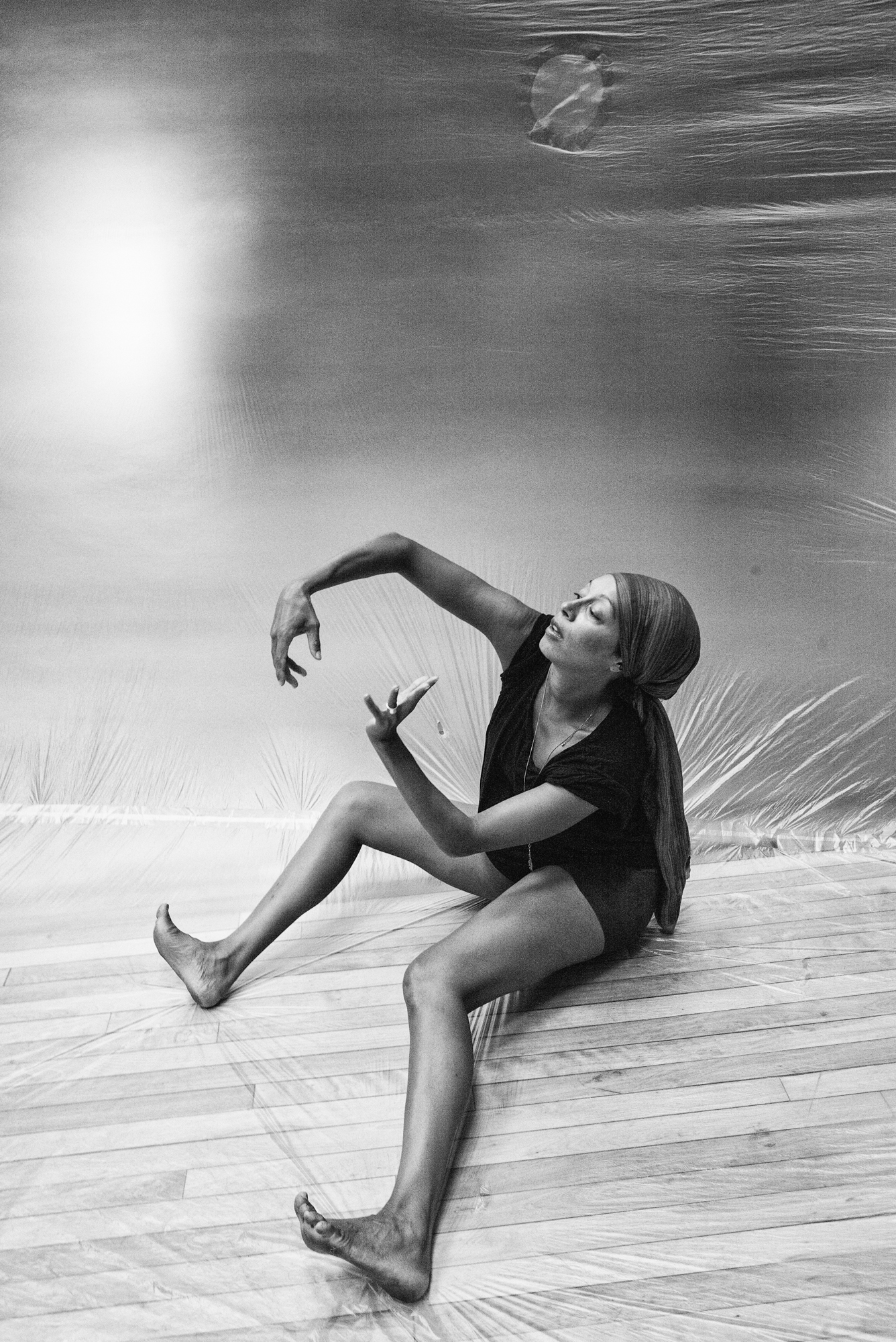
RR: Or “Invitation to Witness.” I mean, the key words we’ve come back to over and over are value, invitation, proximity, witness…
SBB: I’m gonna tell you, this is really wild, too, because it makes me think of the way, and the reason I make films is actually for a witnessing act, as opposed to the spectator, which I feel is very present in the live arts. But I don’t feel that word when I’m thinking of the films.
RR: What makes it different?
SBB: Because the lens of the camera can feel like my journey as a viewer. Whereas a person that just happens to discover this, or happens upon this…this feels much closer in proximity, and that’s something that I love about dance cinema. You’re discovering something from a point of view that we would never think of seeing it from. I’m able to talk about things that I might or might not be able to on the stage.
The Master of Fine Arts in Interdisciplinary Arts (MFAIA) program at Goddard College is a unique graduate experience at the intersection of contemporary art practice and Goddard’s landmark method of low-residency, human-centered learning and teaching. Information about Admissions to the program is available at goddard.edu.

